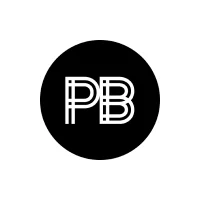Two types of entrepreneurship: The Freelancer and the Entrepreneur
Freelancer vs Entrepreneur, When discussing entrepreneurship across various companies and individuals embarking on their entrepreneurial journeys, the term tends to be overly broad. To determine whether the advice or conventional wisdom is applicable to your specific business, it’s beneficial to establish a clear distinction.
There are two primary categories of entrepreneurship, each operating with distinct characteristics. They encompass different business models and focus on distinct areas of value. These categories are (1) The Freelancer and (2) The Entrepreneur.
Both of these individuals run their businesses, exhibit entrepreneurial traits, and may even have employees. However, their primary focus and business models diverge significantly.
Note: This differentiation draws inspiration from Seth Godin, who adeptly elaborates on this distinction in an Akimbo podcast episode and a masterclass excerpt. Nevertheless, I have expanded upon it using insights from various sources and my own experiences.

The Freelancer
A freelancer earns income based on the work they personally complete. They cannot delegate their tasks or have someone else substitute for them.
Their work involves providing a service tailored to each client’s specific requirements, making each assignment unique.
They essentially represent their brand and are sought after for their individuality. Their distinctive skills, experiences, and track record set them apart.
They are not mere hired hands in need of constant instruction; instead, they serve as advisors and experts. Clients present a problem, and it is their responsibility to determine the most effective solution.
Freelancers do not cater to everyone, nor should they strive to do so. Their aim is to be the absolute best for a select group, perhaps even the sole option. Simultaneously, they must acknowledge that their services won’t appeal to everyone and may be actively disliked by those for whom they are not suited.
Many freelancers operate as one-person businesses, although they can expand by enlisting assistance. Nevertheless, even when they do so, the core brand remains centered on the freelancer.
Their entrepreneurial journey begins the moment they secure their first client. Typically, their expenses are minimal, and the bulk of their revenue constitutes personal income.
Above all, their primary role is to deliver exceptional, distinctive work. All other activities, such as administrative tasks, marketing, and hiring, revolve around facilitating the delivery of exceptional work.
Examples:‘
- The quintessential freelancer: This could include logo designers, travel photographers, video production specialists, consultants, and painters. They provide customized services or products on a project basis.
- The agency: This encompasses consultancy firms, design agencies, and architecture companies. Irrespective of the number of people employed, work is still secured by the virtue of the partners’ expertise.
- The quick-service provider: Coaches, masseuses, jewelry repair professionals, workshop facilitators, and similar professionals typically offer productized services within short time frames.
- The interim specialist: Individuals specializing in interim roles, such as event or change managers, typically offer their services in larger blocks of time, often working a certain number of days per week for a specified duration.
Side Note: In a broader context, an employee could theoretically be considered a ‘freelancer’ of sorts, albeit with a distinct fee structure. An employee receives payment for their work, maintains a personal brand, and exercises an entrepreneurial approach to their career. However, they do not shoulder the risk of generating work opportunities and do not possess the freedom to execute tasks as they see fit.
Side Note 2: It’s important to note that as an interim specialist, you should ensure that you are not compensated as a temporary employee. You still assume the risk of operating independently and are responsible for your own equipment, payment for time off, education, insurance, and pension contributions.

The Entrepreneur
An entrepreneur derives income when the business they oversee successfully sells a sufficient quantity of products. However, they are not directly involved in the production or delivery of the product themselves.
In this context, clients are not seeking the entrepreneur’s personal involvement in delivering the product. Instead, they seek the products created by the company. Since the entrepreneur is not directly responsible for the production of every individual product, standardization becomes essential. Each product must adhere to specific standards and specifications.
The company maintains a distinct brand identity, representing its core values and promises. The products must consistently meet these commitments. Uniqueness in this context emerges from the construction of the operational ‘machine.’ The entrepreneur imparts their vision to the company and translates it into core values, organizational culture, guiding principles, archetypal structures, and established processes and rules.
The work within this framework can be rapidly acquired, or it might encompass a complex amalgamation of distinct areas of expertise, organized and coordinated by the entrepreneur. Through this organizational effort, the entrepreneur crafts products that effectively address specific needs or solve particular problems.
In some instances, the entrepreneurial endeavor is managed solely by the entrepreneur. However, more often, they hire individuals responsible for executing the actual work.
The entrepreneur’s profit is derived from the margins on the products they sell. The execution of work is delegated to others, with the revenue generated exceeding the operational costs, thus yielding a profit. It frequently requires time and investments to develop this operational system to a point where it becomes financially self-sustaining. Therefore, loans or venture capital investments are often sought for the venture.
The primary role of the entrepreneur revolves around growing the business. This entails conveying the company’s story to attract clients and instructing others to carry out the work by instilling the entrepreneurial vision within the company. The entrepreneur’s involvement in the actual work itself is minimal, if at all.
A diverse array of examples can illustrate this concept, including:
- Classic physical products: Establishments such as pizzerias, coffee shops, jewelry or clothing lines, event venues or hotels, and automobile manufacturers, among others.
- Outsourced models: Involving products that are relatively simple, designed once, and rely on automated processes for selling, procurement, assembly, and shipping.
- Resellers: Entities like supermarkets, plant nurseries, and e-commerce platforms such as Amazon.
- Standardized service companies: Engaging in services related to events like festivals and conferences or temporary employment agencies.
- Digital domain: Encompassing software development, apps, data sets, ebooks, online courses, and various digital offerings.
But how about… A few additional examples
Let’s explore a few more instances to better elucidate the distinctions. It’s important to recognize that some individuals engage in different pursuits and might even blend them. One venture might complement or augment the other, serving as a convenient extension. Regardless, each facet of their business operates under distinct operational paradigms.
A musician selling music albums or streams on platforms like Spotify functions as an entrepreneur. However, selling a performance to play at an event is a form of freelancing. When organizing a concert and selling tickets, it also falls within freelancing, albeit with a productized service. The musician must perform at the event, ensuring their presence.
A bookkeeper offering the service of handling tax-related tasks operates as a freelancer. On the other hand, individuals behind Jortt run an entrepreneurial venture, providing DIY bookkeeping software. A service like that of “The Bookie” can also be categorized as entrepreneurship. Even though they offer specialized time, it doesn’t necessarily entail one of the founders to execute the work.
Crafting a customized art piece, such as a painting, constitutes freelancing, where payment is received for the service of creating it. In contrast, generating a range of mass-produced jewelry represents entrepreneurship.
Personal training services qualify as freelancing, where clients receive personalized guidance. On the other hand, organizing festivals or conferences typically aligns with entrepreneurship. The distinction becomes less clear in massive training programs like Tony Robbins’ Date with Destiny. Even though it involves more than just him (with many coaches involved), it is fundamentally dependent on his participation; it’s his ‘show.’ However, when he also teaches others the ‘Tony Robbins Method’ for coaching, that becomes entrepreneurship.
A masseuse who offers her time for therapeutic sessions operates as a freelancer. To stand out, she needs to establish her unique brand. In contrast, a chain of massage parlors, under the administration of an entrepreneur, offers standardized services. The brand serves as a signifier, providing customers with expectations when they visit.
Indicators of Caution
A few warning signs emerge as you approach the boundary of your inherent entrepreneurial style. Keep an eye out for these indicators:
- Freelancers thrive when their distinctiveness significantly enhances value, particularly when leveraging their compact size as an asset to offer heightened specificity.
- Entrepreneurs excel when customers genuinely seek a standardized approach that can be taught to employees, fostering scalability.
- The challenge arises when you tread too close to the periphery of your innate entrepreneurial disposition. Be vigilant for these red flags.
A Challenging Business Model: When Time Comes at a High Price
For a freelancer who meticulously handcrafts every physical product they offer (such as custom jewelry, ceramics, paintings, etc.), convincing customers of the value can be an uphill battle. When you examine the production costs, they might not seem exorbitant individually, but they can quickly accumulate, especially when targeting consumers. This can pose a significant challenge.
The solution doesn’t lie in trying to expedite and enhance production efficiency. While being effective is important, you’ll never outpace a machine in that regard. Instead of diluting your brand, the way forward is to elevate your status, embracing the distinctiveness of your taste, skill, or narrative. Strive for mastery in your craft, and seek out customers who truly appreciate what you offer. This approach allows you to create custom art while building your brand, eventually expanding into product lines where your brand’s essence is embodied in the design but isn’t painstakingly hand-produced.
Charging a Premium for the Ordinary
An entrepreneur must recognize that what’s special is the machine they’ve constructed, not the work they perform, which isn’t particularly unique. A pitfall emerges when the machine isn’t efficient enough, leading to higher prices required to cover time costs. This can result in needing to charge premium rates for work that could be standardized. Such a scenario puts you at risk of being imitated and undercut by more efficient and cost-effective competitors. A prominent example is when a behemoth like Amazon enters your industry. However, it can be as straightforward as a competitor dedicated to connecting clients with personnel they’ve trained to carry out the work.
You must either infuse your work with uniqueness or build a distinctive “production machinery.” Thus, it’s essential to understand why customers choose your services. Is it because you excel in a particular aspect, or is it the well-organized, convenient experience of obtaining and using your product?
Spreading Too Thin
One method for a freelancer to expand is by enlisting the help of hired personnel to handle portions of projects. However, not every type of work lends itself to this approach. It works most effectively for tasks that don’t necessitate a significant in-person component and don’t demand absolute mastery. This is why it can be challenging for trainers and coaches but comes more naturally in consultancy and design.
In an ideal situation, you allocate less complex tasks to employees, allowing you to concentrate on the intricate and strategic aspects that genuinely demand your expertise. Simultaneously, you devote more time to acquiring new clients.
What you shouldn’t do is delegate entire projects to your employees because hiring individuals who are as qualified as you (or more so) is either impractical or costly. Consequently, your client base still anticipates your involvement in the most complex project components, and you’re obligated to invest considerable time in teaching. Unless they’re equally dedicated or have their own ventures, the new hires often don’t possess the same level of commitment. Thus, when you encounter difficulties, you find yourself stepping in to rectify the situation.
It’s a delicate balance. You are, after all, hired for your expertise, particularly for the complex tasks that only you can perform. The challenge arises when you have to juggle those responsibilities, allocate time for teaching, handle straightforward tasks, manage a team for the first time, and secure sufficient work.
A more prudent approach involves gradually outsourcing recurring project elements you typically handle. This approach allows you to develop effective teaching skills, beginning with freelancers. You can consider permanent hires once the scale of work warrants it, following successful project-based collaborations.
Losing Sight of Your Uniqueness
Design agencies and consultancy firms, in essence, operate as freelancers. They secure projects because clients place their trust in the firm’s partners or principals. However, the desire for growth can lead them to make a critical mistake – trying to do it all. They might think, “Sure, we can handle that too.” But when they mistake themselves for entrepreneurs, they run the risk of standardizing their services and diluting their brand.
Failing to recognize what sets them apart makes them susceptible to imitation. They need to make a decision – are they high-end specialists with junior designers or consultants in a supporting role, or are they educators who can effectively guide inexperienced and more affordable employees to deliver relatively good work (akin to “simple” accounting firms)?
What initially propelled them to success might not be the key to surmounting the next hurdle.
Forgetting what initially set them on the path to success can leave them exposed to replication. At some point, selling a product becomes challenging when it’s based on the personal connection to them. The product and company should ultimately stand on their own merits.
The sales, production, and delivery processes should be able to operate independently of them. Therefore, entrepreneurs must successfully transfer their essence and vision into the company, similar to how a thriving clothing brand operates.
The challenge lies in identifying individuals or services that are better equipped to manage specific aspects than they are and consolidating them effectively in a profitable business model. The primary obstacles are teaching and relinquishing control. The more they insist on handling tasks themselves, the slower their business grows.
How to Determine Your Role Here are some questions to help you ascertain your predominant role:
- Do you receive compensation even when you’re not actively working?
- Is your product or service consistent every time, or is it customized based on the client’s needs?
- How unique is your approach? Does your background or life experiences enable you to do things in a way that no one else can replicate? Is it something teachable to others?
- Do people engage with you primarily for your personal abilities and contributions, or are they drawn to your product? Would customers be comfortable if you weren’t the one personally delivering the service?
- What is your primary responsibility: performing the work itself, or overseeing the company’s growth?
- If you had to choose, which aspect of the business would you enjoy the most? Do you want to be hands-on, solving problems and creating solutions? Or do you prefer connecting clients with a solution you’ve designed and cultivated?
Thanks for reading! Help me to write more by sharing this article with your friends, family and colleagues.
Also read:

















